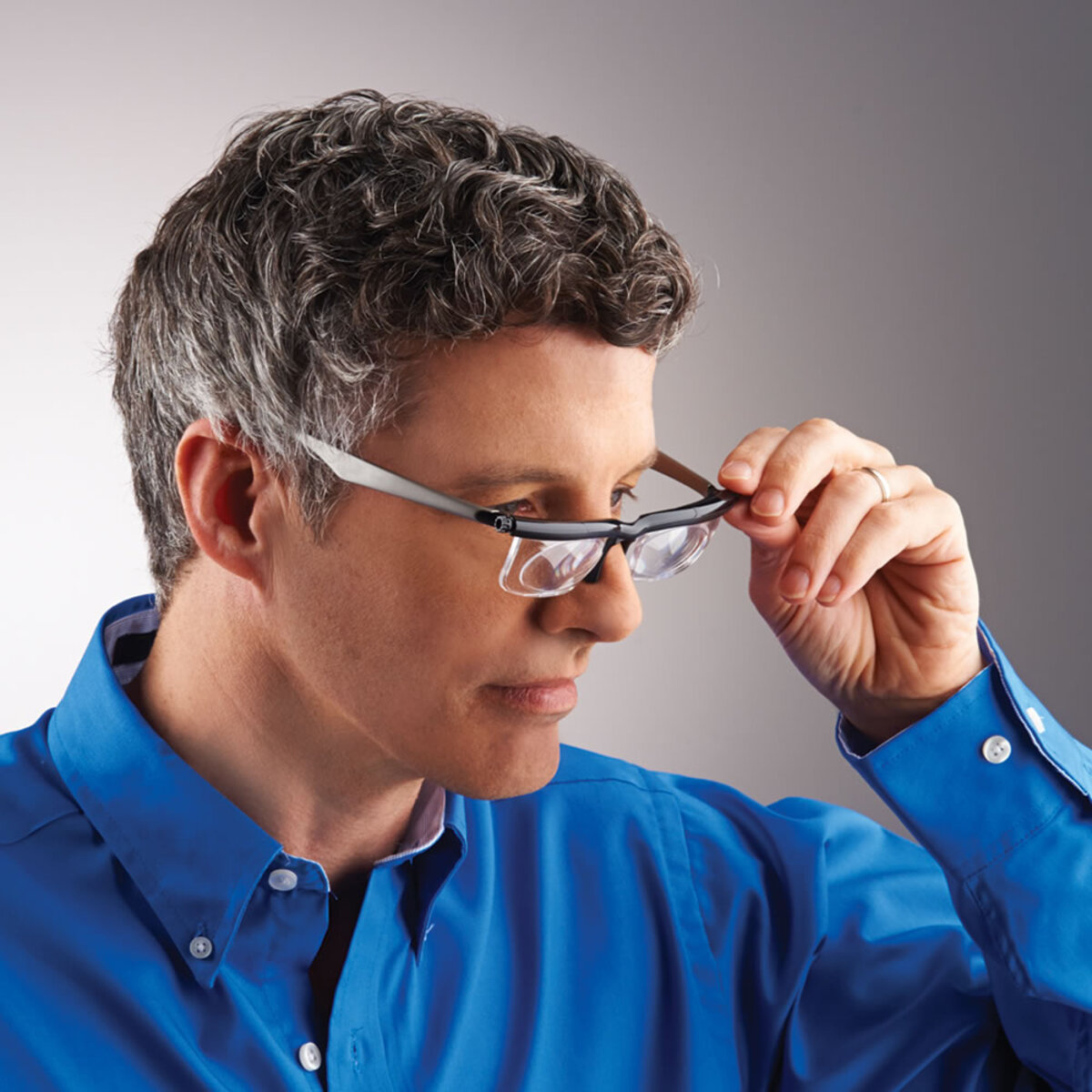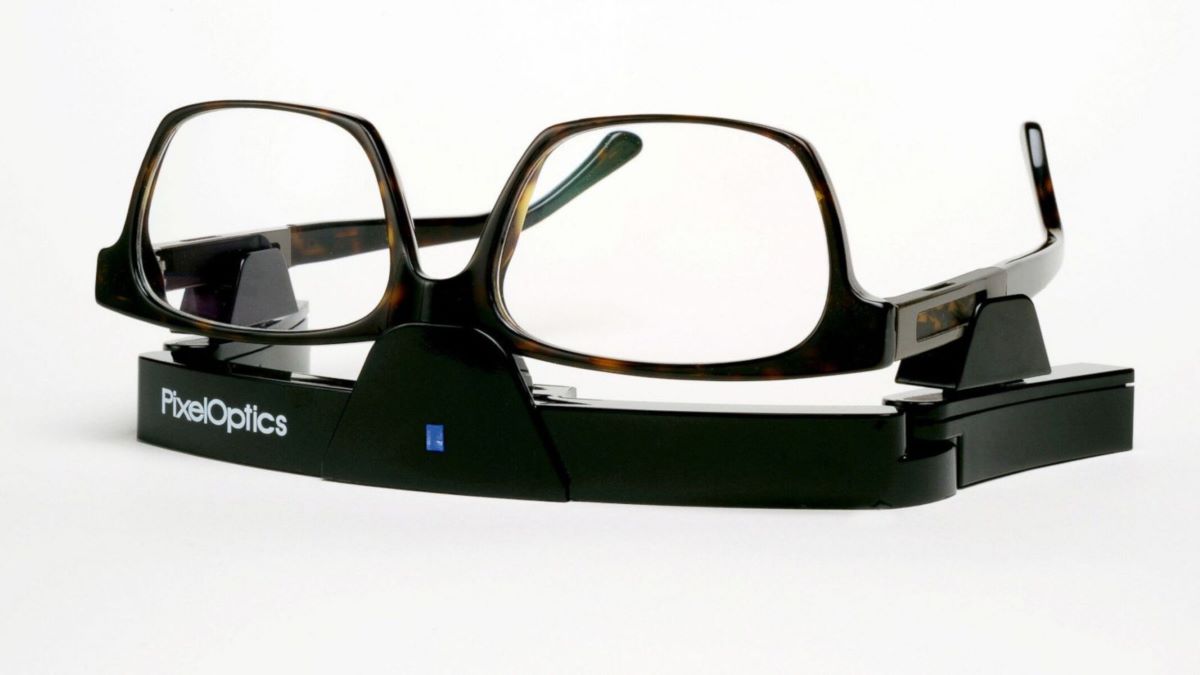What Are Adjustable Focus Eyeglasses?
People with both near- and farsightedness need help seeing clearly at different distances.
One of the more unusual solutions to help them do so, without switching between glasses, is adjustable focus eyeglasses. These nifty glasses, as the name suggests, allow you to actually adjust the focus, so you can read a book or look off into the distance with equal clarity. Pretty cool, huh?
Whilst they aren’t for everyone, they’re interesting to explore. Let’s look at what they are, how they function, and their advantages.
How do adjustable focus eyeglasses work?
Adjustable focus eyeglasses allow you to easily adjust the focus to suit your changing visual needs.
How? Well, these glasses typically use fluid-filled lens technology that lets wearers adjust the lens power to see clearer.
These glasses have a special membrane in each lens that responds to the fluid they contain. By using a small syringe in each arm of the glasses, the amount of fluid in the lens can be changed to adjust its refractive power.
When correcting hyperopia (farsightedness), it pumps fluid into the lens to increase its power for close-up vision. Alternatively for myopia (nearsightedness), pumping fluid out decreases the lens power for clearer distance vision.
This makes adjustable focus eyeglasses an excellent option for people who need clear vision at various distances, whether for reading, computer work, or just taking in the scenery.
While progressive lenses can also correct vision in multiple distances, they require the user to shift their gaze to adjust the focus. Adjustable focus eyeglasses on the other hand, have a single focal point that don’t require the user to change their eye position.
There are two main types of adjustable focus eyeglasses: electronic and mechanical.
Electronically adjustable focus glasses use advanced technology to adjust the lenses’ focus. These glasses are equipped with small motors and sensors that work together to change the focal length of the lenses.
The sensors detect the distance between the wearer’s eyes and the object they are looking at, then send this information to the motors. The motors then adjust the position of the lenses to achieve the optimal focal length for the wearer’s vision.
Mechanical adjustable focus glasses have a simple lever or dial mechanism to adjust the lenses’ focus. These glasses typically have two lenses with different focal lengths that can be adjusted independently. The wearer can then use the lever or dial to move the lenses closer or farther apart, changing the focal length and enabling them to see more clearly at different distances.
Overall, adjustable focus eyeglasses are a versatile and practical solution for people who need to see clearly at different distances. They offer a natural and comfortable viewing experience by providing an easier way for you to see the world in focus at any distance.
Why do some people choose adjustable focus eyeglasses?
Convenience
With adjustable focus eyeglasses, you no longer need to carry multiple pairs of glasses or switch between them.
Cost-effectiveness
In the long run, adjustable focus eyeglasses can be more cost-effective since they eliminate the need for multiple glasses.
Versatility
You can easily switch between distances, making them ideal for people who need to see clearly at different distances throughout the day.
Comfort
Adjustable focus eyeglasses provide a comfortable viewing experience by enabling the wearer to see clearly from any distances without tilting their head or shifting their gaze.
Do I need adjustable focus eyeglasses?
At the end of the day, adjustable focus eyeglasses aren’t going to replace regular progressive or bifocal glasses. After all, they tend to be less comfortable and come with very limited ‘style’ options. However, they can be suitable in a pinch, especially if you have one of the following conditions:
Presbyopia
This age-related condition makes it more difficult to see up close as one gets older. Adjustable focus eyeglasses can help you see near and far distances clearly and comfortably, making them an excellent choice for people with presbyopia.
Myopia and Hyperopia
Myopia and hyperopia are also known as nearsightedness and farsightedness, respectively. Adjustable focus eyeglasses are an excellent option for people who struggle with both nearsightedness and farsightedness since they can improve vision for near and far distances. In contrast, those with only one single vision condition can opt for single-vision lenses.
Computer and reading-intensive work
If you spend long hours in front of a computer screen or have a job that requires a lot of reading, you might want to consider adjustable focus glasses. These glasses offer clear vision at different distances, which means you won’t have to switch between multiple pairs of glasses or strain your eyes to see clearly.
What to consider when choosing adjustable focus eyeglasses
Prescription requirements
Before you choose your adjustable focus eyeglasses, it’s best to go for an eye exam and get an updated prescription from your optometrist first. This will ensure that you get the correct lens power to see as clearly as possible.
Lens materials
The most common types are glass and plastic, which are more popular options due to their lighter weight and durability. You can also opt for lenses with coatings that reduce glare or provide protection from harmful UV radiation.
Frame materials
When choosing your adjustable focus eyeglasses, consider factors such as the comfort and durability of the material of the frames. Metal alloy frames (titanium, stainless steel, aluminum) are durable and flexible. On the other hand, synthetic frames (acetate, TR-90) offer lightweight comfort and versatility.
Simplifying your vision needs
Adjustable focus eyeglasses are a versatile and cost-effective solution for some people with multiple vision needs. They also offer convenience for those with computer- or reading-intensive tasks. However, they’re unlikely to replace regular glasses anytime soon!
To make sure you find the right adjustable focus eyeglasses that best fit for your needs and lifestyle, consider your prescription requirements, lens materials, and frame styles.
Learn all about different types of eyewear and eye care tips by visiting our blog!

Written by:
Angie Garcia
















